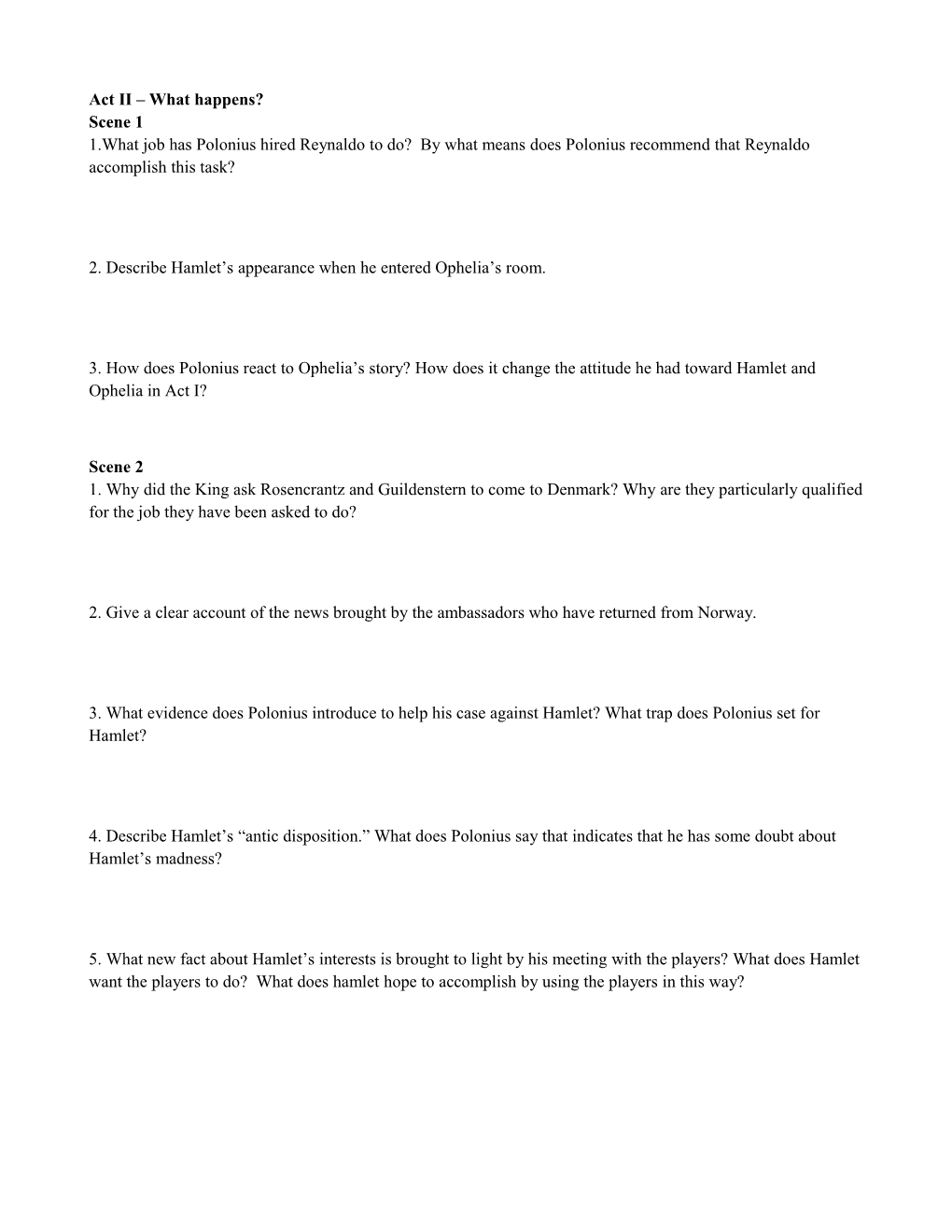Act II – What happens?
Scene 1
1.What job has Polonius hired Reynaldo to do? By what means does Polonius recommend that Reynaldo accomplish this task?
2. Describe Hamlet’s appearance when he entered Ophelia’s room.
3. How does Polonius react to Ophelia’s story? How does it change the attitude he had toward Hamlet and Ophelia in Act I?
Scene 2
1. Why did the King ask Rosencrantz and Guildenstern to come to Denmark? Why are they particularly qualified for the job they have been asked to do?
2. Give a clear account of the news brought by the ambassadors who have returned from Norway.
3. What evidence does Polonius introduce to help his case against Hamlet? What trap does Polonius set for Hamlet?
4. Describe Hamlet’s “antic disposition.” What does Polonius say that indicates that he has some doubt about Hamlet’s madness?
5. What new fact about Hamlet’s interests is brought to light by his meeting with the players? What does Hamlet want the players to do? What does hamlet hope to accomplish by using the players in this way?
6. Hamlet takes stock of himself in the last speech of the act. What is the result of his self-estimate? Do you agree with him?
What Does It Mean?
THE ACTION
1. Out of Polonius’s meeting with Reynaldo, the King’s with Rosencrantz and Guildenstern, and Hamlet’s with the players grow three similar tasks. How are they parallel? In what ways do they differ? Explore the various ways in which these incidents are presented to the audience.
2. Each of the two scenes in Act II reveals a new facet of Hamlet’s character. Describe the development of the act from this point of view, beginning with Ophelia’s disclosure to her father that Hamlet has visited her, and Polonius’s decision to inform the King about this visit.
3. The mystery and expectation of Act I give way in Act II to the use of specific rational methods for exposing the rot in Denmark. Is Act II any less passionate because of this emphasis on contrivance? How are the strong feelings of Polonius, Claudius, and Hamlet revealed, and how do they contribute to the furthering of the action?
CHARACTERS
1. The traveling players innocently come to Elsinore to perform. How do they become crucial to the plot of the play?
IMAGERY
1. “Denmark’s a prison,” Hamlet tells his boyhood friends. What is the meaning of this metaphor?
